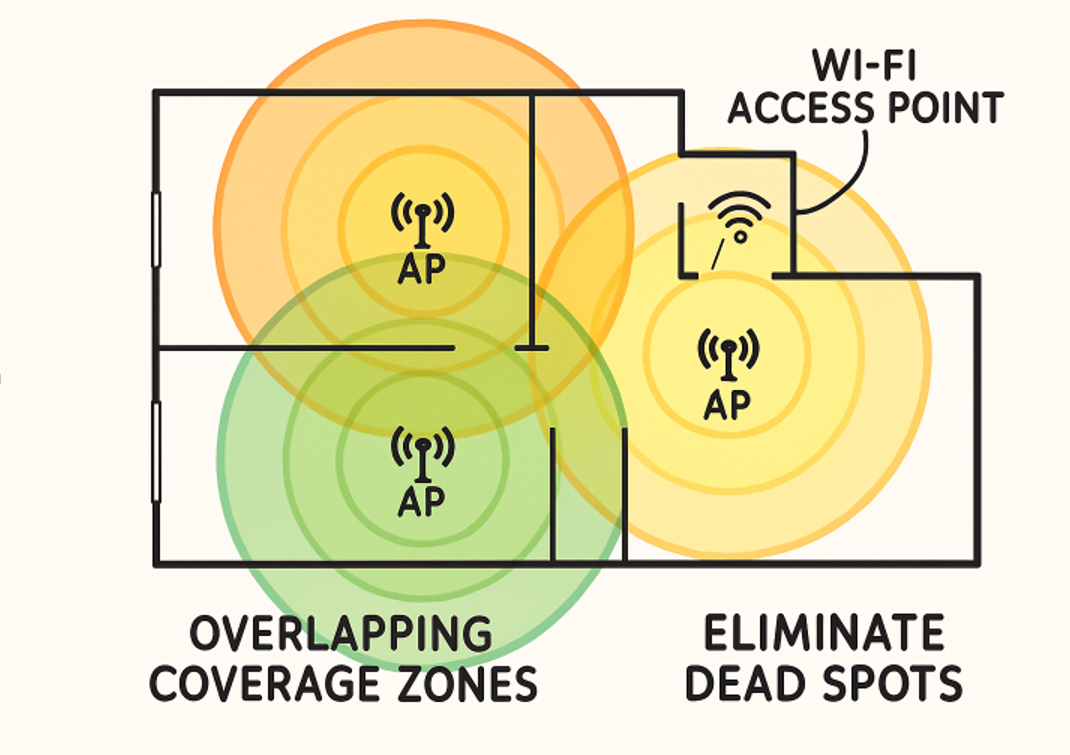Optimizing Wireless Connectivity: Best Practices for Seamless Network Performance
Reliable wireless connectivity is the cornerstone of both business success and personal convenience in today’s rapidly digitizing world. Now more than ever, businesses and individuals depend on wireless networks to power collaborative tools, access cloud-based resources, and ensure the uninterrupted flow of daily communications. Even brief disruptions or slow network speeds can significantly impact productivity, customer satisfaction, and the overall efficiency of vital processes. This heightened reliance makes it essential to implement proactive measures that deliver rock-solid network performance. Signal Solutions exemplifies how skilled wireless professionals leverage advanced tools, technical expertise, and innovative approaches to prevent issues before they arise. Organizations that embrace these strategies not only realize immediate uptime improvements but also position themselves to thrive well into the future by maintaining consistently reliable and high-performing wireless infrastructure.
This article takes a comprehensive look at the best practices proven to create and maintain seamless wireless networks. From in-depth site surveys that lay the foundation to vigilant performance monitoring and robust security protocols, these expert strategies empower both organizations and individuals to maximize their network investments. Following these principles ensures your wireless network operates at peak performance, offering stability and reliability when it matters most, no matter how demands evolve over time.
Comprehensive Site Surveys
Every effective wireless deployment begins with a meticulous, data-driven site survey. Before any equipment is installed, wireless specialists perform an in-depth assessment of the physical and radio frequency (RF) environment. This involves carefully scanning for possible sources of interference, which can include dense walls, elevator shafts, metallic surfaces, and even other wireless networks competing for bandwidth on similar frequencies. Utilizing sophisticated diagnostic tools like heat mapping software and RF spectrum analyzers, these experts can visualize wireless signal distribution, pinpoint coverage dead zones, and highlight areas of overlap or congestion. By identifying these trouble spots before installation, organizations proactively eliminate factors that could cause signal drop-offs or inconsistencies later on.
Industry leaders rely on advanced solutions to perform initial site surveys and ongoing health checks. These platforms provide granular insights like client location tracking, channel utilization data, and predictive modeling for network scalability. Site surveys conducted with this level of precision empower decision-makers to choose the right number and type of access points and develop a tailored network blueprint that matches unique architectural and organizational requirements. Ultimately, thorough site evaluations form the foundation for building resilient wireless networks that can handle both today’s demands and tomorrow’s growth, minimizing future connectivity complaints and support tickets.
Strategic Access Point Placement
The strategic placement of access points (APs) is crucial for maximizing wireless coverage and minimizing performance gaps. The effectiveness of a wireless network is directly linked to how well APs are distributed in relation to the surrounding environment. Physical factors like construction materials, room dimensions, partition types, and ceiling heights influence how radio waves propagate. High-traffic environments like corporate headquarters, university campuses, or convention centers may require a denser array of access points, careful AP tuning, or specialized antennas to efficiently serve simultaneous users while minimizing signal overlap and cross-channel interference. Urban settings have seen significant performance gains by embracing small-cell AP technologies, which manage massive data throughput in congested areas.
See also: Financial Forecasting Techniques 3533315575
Regular Performance Monitoring
Once a wireless network is up and running, maintaining optimal performance requires continuous, intelligent monitoring. Wireless environments are dynamic—changes in furniture layouts, the addition of new electronic devices, structural renovations, or an expanding user base can all introduce unexpected interference or strain on network resources. Proactive, real-time monitoring enables IT teams to catch issues early by employing both predictive analytics and post-installation diagnostics such as updated heat maps, log analysis, and automated performance alerts.
Modern network management tools often include cloud-based dashboards and AI-powered analytics, providing real-time visibility into network health, bandwidth utilization, and device behavior. These features allow administrators to act on early warning signs of signal degradation, reroute bandwidth, mitigate bottlenecks, and isolate rogue devices that could undermine performance or security. Effective monitoring also generates valuable historical trend data, empowering decision-makers to anticipate traffic peaks, understand user patterns, and scale resources strategically before end users even notice a problem, ultimately supporting business continuity and a seamless user experience.
Robust Security Measures
Wireless networks face increasing security threats, including unauthorized access, data interception, and sophisticated cyberattacks. To protect them, strict security protocols are essential. Modern encryption standards like WPA3 offer robust resistance against brute-force attacks and eavesdropping. Strong password requirements, frequent passphrase changes, and granular access controls ensure only authorized users and devices can connect. Regular firmware updates and security patches are crucial to prevent software vulnerabilities. User awareness is also crucial, with staff, students, and household members being educated about safe digital practices. Regular reminders about unfamiliar email attachments, public Wi-Fi dangers, and private credentials keep network security top of mind. A culture of security awareness and strong technical safeguards is crucial for building resilient defenses against evolving cyber threats.
Scalability and Future-Proofing
Given the accelerated pace of technological advancement and changing user needs, wireless networks must be designed with scalability and adaptability at their core. Scalability involves choosing modular hardware, leveraging cloud-managed controllers, and adopting flexible licensing models—all of which allow for seamless expansion without the need for disruptive overhauls. Strategic planning at this stage can greatly simplify the process of accommodating new devices, additional users, or broader coverage areas as demand increases over time.
Future-proofing requires an ongoing commitment to evaluating and evolving the network. Staying abreast of emerging wireless standards—like Wi-Fi 6, Wi-Fi 6E, and the anticipated Wi-Fi 7—ensures the underlying technology can handle greater device densities, faster data rates, and heightened security requirements. Regularly revisiting network architecture, budgeting for incremental hardware and software upgrades, and collaborating with standards-focused professionals all contribute to a resilient, ready-for-tomorrow wireless ecosystem. These efforts help organizations control upgrade costs, minimize downtime, and provide users with exceptional wireless experiences year after year
Professional Installation and Support
The final step in achieving best-in-class wireless performance is the selection of skilled installation and support partners. Certified experts ensure the correct installation of APs and networking equipment and fine-tune device placements and settings for peak efficiency tailored to the site’s unique layout. This often includes configuring specialized features such as point-to-point wireless bridges, network segmentation for separate user groups, and advanced channel planning in especially challenging environments.
Ongoing professional support is equally critical. It provides rapid troubleshooting, coordinates timely firmware and security updates, and delivers expert consultation for scaling the network as operational requirements evolve. Businesses that engage in long-term partnerships with knowledgeable providers reap the benefits of higher uptime, reduced pressure on internal IT resources, and smoother expansions or technology upgrades down the line. This results in a robust, worry-free wireless experience that empowers users and enhances organizational efficiency.





